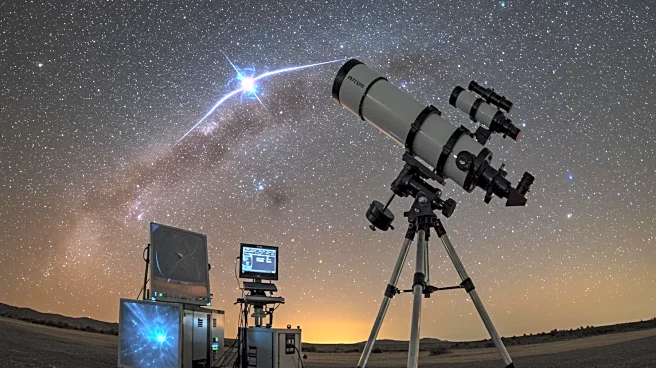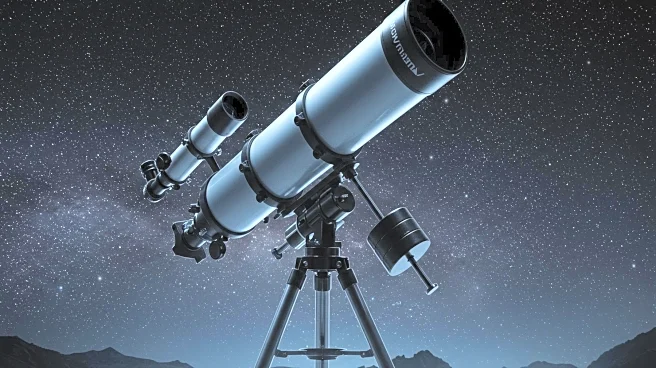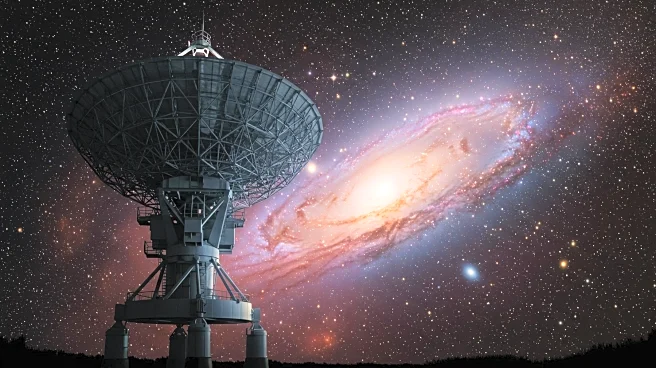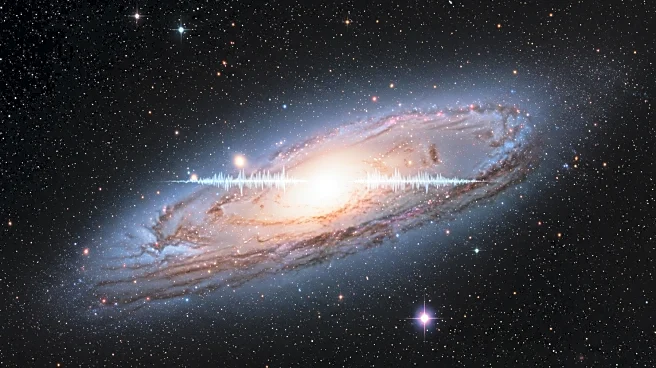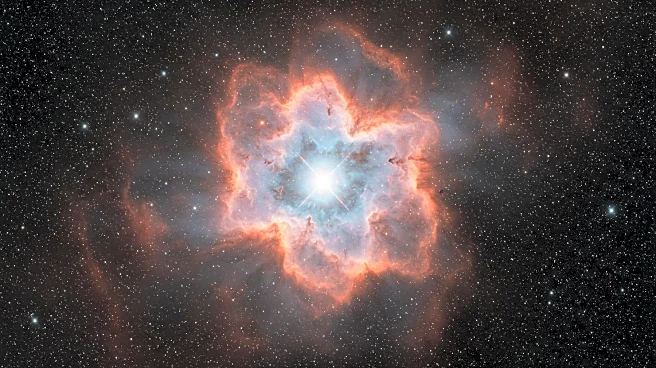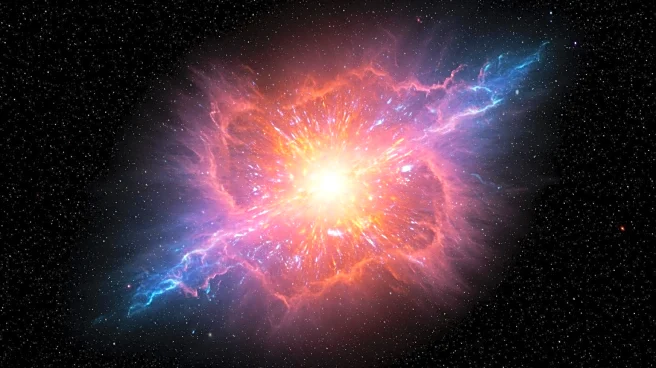What is the story about?
What's Happening?
An international team of astronomers has discovered a new planet, WISPIT 2b, estimated to be five million years old. This gas giant, comparable in size to Jupiter, was detected using the European Southern Observatory's Very Large Telescope in Chile. Located approximately 430 light years away in the constellation Aquila, WISPIT 2b is in an early stage of formation around a young star similar to our Sun. The discovery was made possible by observing a multi-ringed dust disk, which led researchers to identify the planet within it. The planet is still actively accreting gas, forming its atmosphere, and was captured in near infrared light.
Why It's Important?
The discovery of WISPIT 2b provides valuable insights into the early stages of planet formation. Understanding the processes involved in the formation of gas giants can enhance our knowledge of planetary systems and their evolution. This finding contributes to the study of dust and gas-rich disks around young stars, which are crucial for planet formation. The research also highlights the capabilities of advanced observatories like the ESO's VLT in detecting and studying distant celestial bodies.
What's Next?
Further observations and studies of WISPIT 2b will continue to explore its formation and characteristics. Researchers aim to understand the dynamics of multi-ringed dust disks and their role in planet formation. The discovery may lead to additional findings of planets in similar early evolutionary stages, advancing our understanding of planetary systems.
AI Generated Content
Do you find this article useful?





